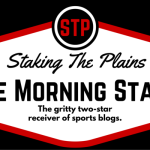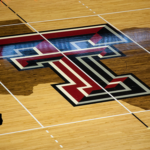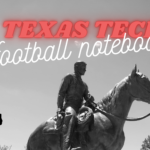I’ve held onto a few things as we head into the season, mainly, the idea that we could possibly expect a significantly different defense based on the hiring of Derek Jones.
A while back, I ran across this tweet that I thought was timely, especially given the idea that Keith Patterson somewhat prides himself on being a defensive guy that tries to create pressure on opposing offenses and create negative plays.
Negative plays really suck. pic.twitter.com/e9JWQek3WT
— SportSource Analytics (@SportSourceA) August 16, 2020
For those of you who don’t click the tweet, the information provided seems to indicate that opposing offenses have a more difficult time if the defense gains a negative play. Opposing offenses score on 43% of plays without a negative play, but 25% if there is a negative play and only 15% of the offensive drives score a touchdown.
I think that’s pretty significant.
In terms of a baseline, Texas Tech was 5th in the Big 12 in tackles for a loss with 80. The Texas Tech defense was only 7th in the Big 12 in sacks with 24, 3rd in interceptions with 14, and 6th in fumbles recovered with 5.
That’s pretty middling for the most part. Not terrible, but when your defense is predicated on turnovers and negative plays, middling isn’t terrific.
How much different is the defense going to look, especially in the secondary? Well, per ProFootballFocus, Duke was 2nd in the country in man coverage snaps in 2019, which if you are wondering where my comment about Derek Jones comes from, well, Jones coached at Duke and you better be ready for man coverage out the wazzu.
Most man coverage snaps played in 2019:
LSU 270
Duke 230
Missouri 226
Ohio State 223
Oregon 221 pic.twitter.com/ethSEN0w95— PFF College (@PFF_College) June 4, 2020
And the symbiotic relationship between the secondary and the pass rush is about to be emphasized even more. FiveThirtyEight wrote recently about the importance of the pass rush and maybe, more importantly, sacks to the NFL. It’s not apples to apples because it is the NFL, but if we go back to the numbers in the initial tweet of this post, they are remarkably similar.
The same, however, can’t be said for sacks. Sacks are always bad for the offense — they only vary in degree. In fact, when a drive includes at least one sack of the opposing QB, defenses went on to force a punt over 18 percentage points more often than on drives with no sacks.
If offenses are punting more often on series when they take a sack, it makes sense that scoring drives on those series are also less frequent. From 2017 to 2019, drives culminating in touchdown passes occurred 10.9 percentage points less frequently when the QB was sacked, and fumbles occurred 5.4 percentage points more frequently.
There is a saying in the NFL that disruption is production, meaning that even if a defensive pressure play doesn’t end in a sack, that player’s contribution is still beneficial. We can see from the data that this is certainly true — pressure plays have value. But pressures are worth only a little over a quarter of the value of a sack. Overall, sacks are strongly positive plays for the defense, accounting for 1.47 EPA per play — over a full point better than the average pressure play. This helps explain why NFL teams value elite pass rushers as highly as they do. A player capable of averaging a sack a game over the course of a season is going to substantially impact a team’s fortunes.
Without a doubt, the sacks need to be prioritized and I tend to think that a large part of the success of a defense that plays man coverage for a majority of snaps is going to play out. In fact, Duke played man coverage for 65% of snaps last year and so when the coaching staff talks about getting the best five players on the field, well, they’re going to have to be good.
And the pass rush is really dependent on Eli Howard and whatever can be mustered from Brandon Boyer-Randle, who was effective as a pass rusher in 2018 for Michigan State, but that will be critical to Texas Tech’s success. And I don’t think there’s any doubt that Patterson knows these stats, that pressure creates problems for the offense, which is why he gambles so much.








